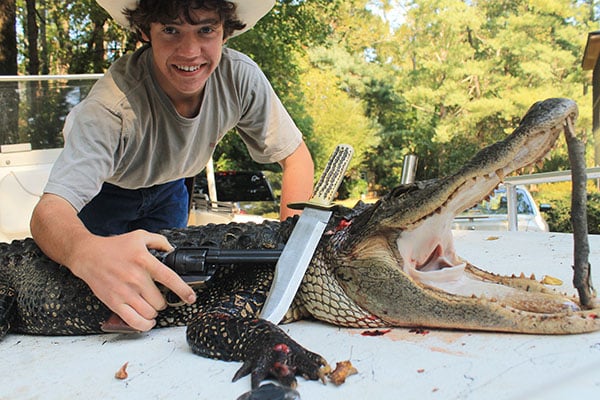
Last Updated on
By Pete Rogers
Since the popularity of the television show Swamp People, hunters all across the country have become enamored with hunting alligators. In my home state of South Carolina, hunting alligators is a lottery, and getting drawn is pretty much sketchy at best. In the nine years we have had a season, I have drawn a license twice and been successful once. But this does not deter the excitement of going on a hunt. Like many places party hunting is allowed so even though I may not have drawn, some of my buddies did and we all still get to go on the hunts.

Hunting alligators in many parts of the country is very different than what is depicted on the popular television show. Most states do not allow the use of baited hooks for alligators, nor do they allow for shooting across open water. That being the case, there are many different tactics and techniques to be successful when hunting alligators.
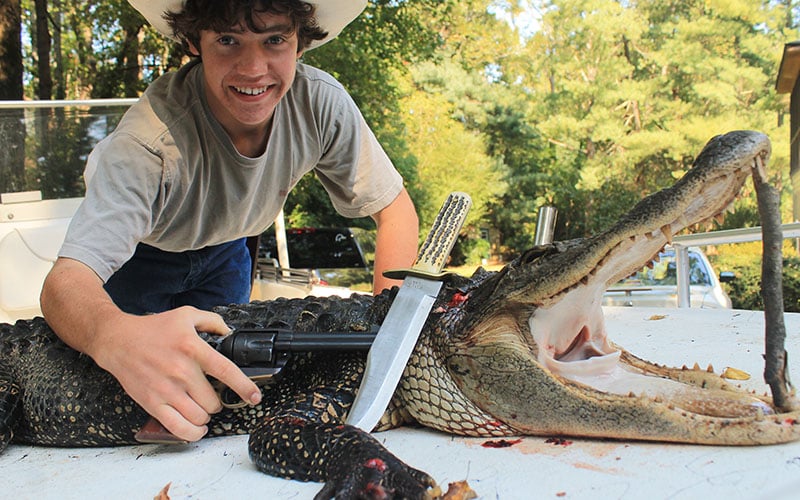
Alligator hunting in many states a 24 hour hunt. Being able to hunt them during daylight and night increases your odds of connecting on a big ole gator. In fact, R.J. Molinere of the famous show told me: “If we were allowed to hunt gators at night, we would get our three hundred tags filled in a few days.” Indicating how much more active gators are at night and the ability to get closer and in range of them after the sun sets. I cannot imagine having enough alligators for one hunter to have three hundred tags. Our limit is one and as stated, getting drawn for a tag is limited.
For states and areas that do not allow for the baiting or the shooting across open water, there are some other methods for getting your gator. The most common is a snag hook. Or basically a very large weighted treble hook tied onto a large spinning rod and reel and cast over the alligator and snag them with the hook. The hunter/angler will then fight the gator to submission and bring them in for a killing shot.
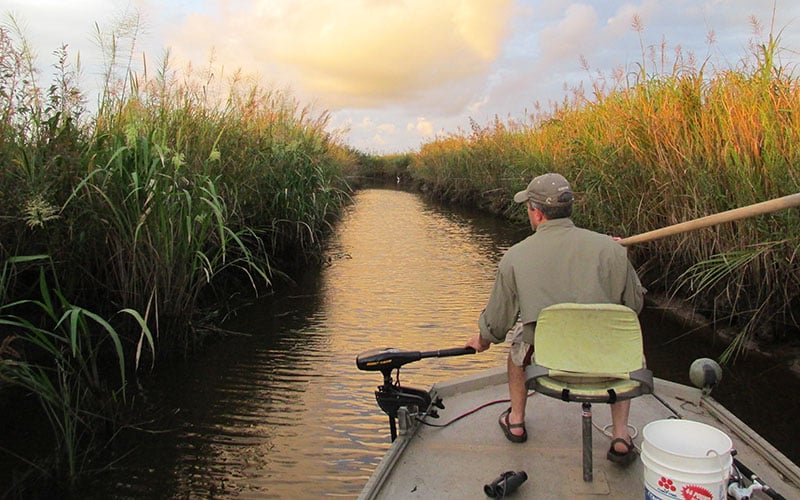
Other methods include: crossbow, bow and arrow and harpoon. All three of these methods are very similar in that they deliver a large point/tip into the alligator to use to fight the alligator to submission. In the case of the bow and arrow and crossbow, the arrow is shot into the alligator, the tip remains in the alligator and the shaft falls away so the fight of the alligator is not impeded by the shaft. While the harpoon is very similar, only it is thrust into the alligator by hand and not with the use of a bow of any sorts.
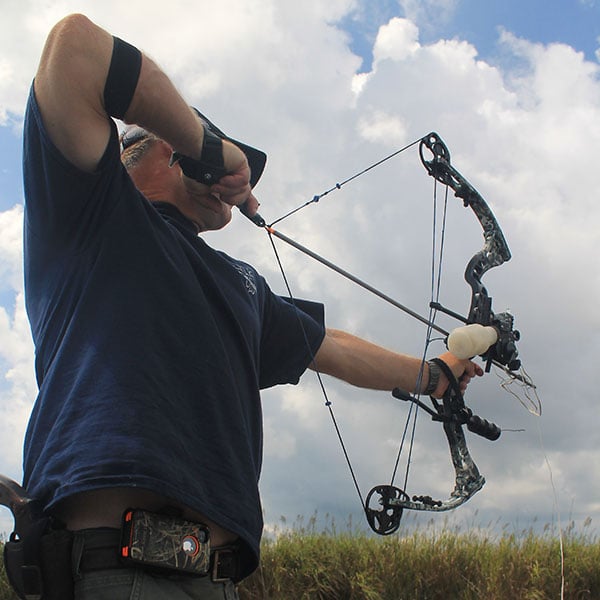
Other gear needed to find, land and subdue the alligators can be very complicated or very simple. We usually opt for somewhere in the middle. Preferring stealth over aggressiveness, the use of a silent trolling motor or push pole, hand held spotlights and lights with red filters we are able to locate a lot of alligators and make determinations of whether to go after them or not.
Hunting alligators is a lot about stealth and subtleness. Being able to get within range of a fifty year old alligator is not as easy as it appears on the television. Many biologists estimate alligators that have reached ten feet or bigger are in the forty to sixty year range and the truly giant ones are much older. An alligator killed in the Santee Cooper lakes in 2010 that measured 13 feet but weighed in at 1,025 pounds with a girth of 79 inches, and was estimated to be in excess of seventy five years old!
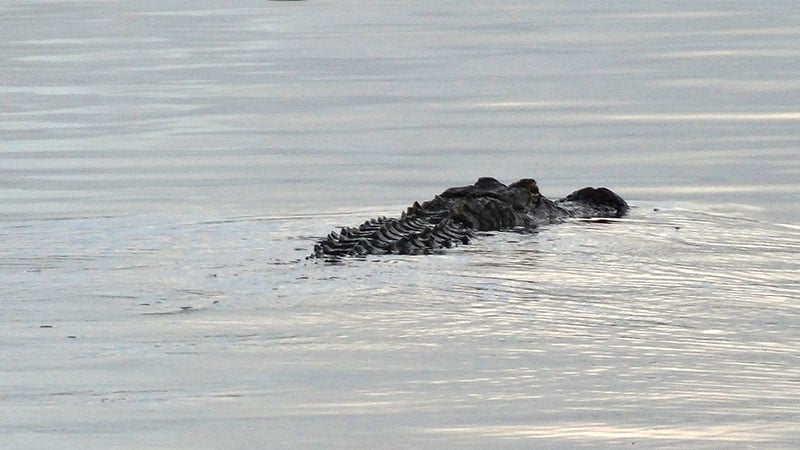
In many cases, the alligators must be subdued and restrained before dispatch. This being the case, as it is in South Carolina, hunters must shoot the alligator or connect with a snatch hook and fight the gator to the side of the boat and have it fully restrained before being dispatched. Most choose to use a snout snare or a tail gaff to lasso the gator and hold them from getting away. Then a well-placed shot from either a bang stick or a handgun will complete the task.
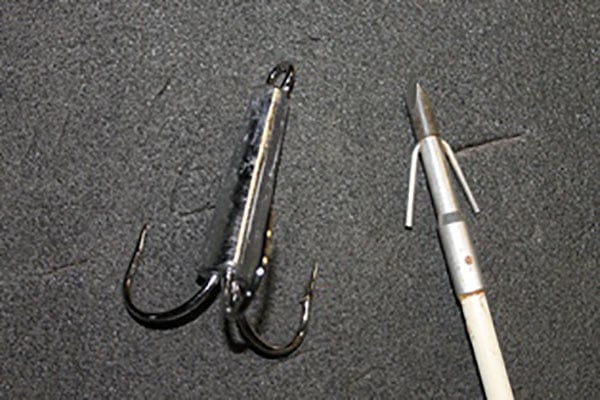
When using a bang stick, most will opt for a .38 caliber while many of the handgun enthusiast choose a 9mm. Personal experience has shown that the .22 WMR or the .17 HMR rifle is about as good as it gets. Greg Braselton, a very successful alligator hunter in SC state it this way; “ A caliber larger than a .22WMR carry’s a lot of energy and that energy has to be displaced somewhere, either in bone, or water or both. Shooting anything larger than a .22WMR opens the door for an accident that is not necessary. The .22WMR placed where it should be, does the job very well.”
Alligator have surprisingly small brains, I mean, very small brains. Making a brain shot is more about luck than skill. When shooting at very close range the target is the spine and trying to sever the spine and send a bullet or fragment into the brain. For example, a nine foot alligator I killed a few years ago has a brain cavity smaller than a standard marble. It is shocking just how small the brain is. That being said, alligators are simply instinctual animals. They do not think, they react based on instinct. Shooting a restrained alligator is about precision. Placing one good shot into the spinal column will quickly subdue the gator. To complete the task, many use a very large knife to separate or sever the spinal cord at the base of the skull thereby cutting off all signals to the rest of the body effectively killing the gator.
Getting your alligator is exciting and thrilling. Being prepared is essential, having the right gear and knowing how to use it can make or break the outing. Taking the time to get used to your gear will help you be a lot more successful in the field.




Leave a Reply